The Story Behind The Greatest Sports Movie of All Time
It took persistence, belief, and...Jack Nicholson?
Last weekend, something wonderful happened.
It was my eight year old’s turn to pick a family movie.
His older sister was pushing for “something Halloween or scary” and I felt an evening of Goosebumps or The House with a Clock in its Walls was in my future.
But then he said something that surprised me.
“Can we watch Hoosiers?”
Can we watch Hoosiers, the greatest sports film of all time?
The movie that was filmed not far away from where I grew up in Indiana?
The film where my older sister and I got to be extras1 in the crowd of a basketball game?
Of course we can watch Hoosiers!
Watching that film takes me back to 1985, when I made my cinematic debut. (You’ll have to look really hard to find me in the crowd).
I remember getting dressed for my day on set — my hair in pigtails, and slipping on a new pair of penny loafers to accompany a dress my mother wore as a child (and still owned for some reason).2
I remember sitting down during our lunch break and opening the packed lunch my dad made for me.
When I pulled back the tin foil covering my peanut butter sandwich, I found a note from Dad that said, “Don’t forget us when you’re famous!”
I remember learning the term “flagrant foul” during that scene they filmed, and smiling at Lex Luthor Gene Hackman, and when he winked at me3.
But those are my unique memories.
Hoosiers will always hold a special place in my heart – but how did this little film based on (or more accurately, inspired by) a true story get made?
I was curious…
So let’s start with the true story…
In 1954, a small school in Indiana beat a much bigger school to win the state basketball championship.
That small school, Milan (not pronounced like the city in Italy), had only 161 students at the time, while their competition, Muncie Central, had more than 10 times as many4.
The game was a nail-biter, and the final seconds played out as dramatically as a Hollywood movie.
The score was tied at 30, and a timeout was called with just 18 seconds left on the clock.
Milan’s star player Bobby Plump (who won the coveted title of Indiana’s “Mr. Basketball” in 1954) began dribbling from half court, making his way toward the basket.
And as the game clock got closer to zero, Plump took his shot – and he scored!
Milan won the game 32-30, becoming the smallest school in Indiana history to win the state championship.
The day after winning the championship, a crowd of 40,000 people lined State Road 101 for 13 miles to congratulate the team as they came home from Indianapolis.
Their victory was coined “The Milan Miracle” and would go on to become one of the most exciting stories in Indiana sports history.
But unlike the movie Hoosiers, the 1954 Milan team wasn’t coached by a hothead middle-aged man who was new to town.
There was no lovable town drunk who cleaned up his act (for a while) to help coach the team.
And the love story Barbara Hershey brought to the film was not inspired by true events either.
But never mind…
Plump and his teammates from the tiny town of Milan winning the state championship feels like a miracle.
And the fact that the film inspired by it, Hoosiers, was made feels like a miracle, too.
Let’s dig in…
To grow up in Indiana means to grow up with basketball.
It is our sport.
It is part of our history.
It is part of our DNA.
Indiana is the state of Hoosier5 basketball greats like ‘The Big O’ Oscar Robertson.
And it is the state that embraced Hall of Fame Indiana Pacers player (and epic trash talker) Reggie Miller — and Indiana University men’s basketball coach Bob Knight.6
[How lucky are this generation’s kids in Indiana to have phenom Caitlin Clark as part of the WNBA Indiana Fever?]
James Naismith may have invented the game in Massachusetts, but even he said basketball “really had its origin in Indiana.”

And while my friends and I grew up hearing about Larry Bird and the superstars at IU7, earlier generations of Hoosiers — like the film’s screenwriter Angelo Pizzo and director David Anspaugh — grew up hearing about the Milan Miracle.
Bloomington, Indiana native Pizzo met and became friends with fellow Hoosier Anspaugh when they were students and fraternity brothers at Indiana University in the 1960s.
They shared a love of film, and had ideas about heading west to pursue careers in Hollywood.
“Our dream was to somehow get involved in the film business – and one day make a movie based on Milan High school,” Anspaugh said.
But the idea of two kids from Indiana getting to Hollywood and making a movie about a small town basketball team seemed impossible.

“Everyone laughed at us. Literally. Everyone laughed us out of the room.
“We had a professor who told us that we had a better chance of walking on the moon than ever achieving what we dreamed of.”
After graduation, Anspaugh moved to Aspen, Colorado where he worked as a ski instructor and substitute teacher. A year later, after Pizzo graduated, he joined his friend in Colorado, though he had set his sights on attending film school at USC.
Pizzo was a film buff who “kept little index cards on every movie he ever saw” and hoped to become a professor.
He was accepted by USC, and moved to Los Angeles to further his studies.
And it wasn’t long before Anspaugh joined him out west.
While Pizzo was working on his doctoral thesis in the history, theory, and criticism department of the film school, Anspaugh began studying film production at USC.
He would go on to work as a producer for TV films, and went on to direct hit TV shows like Hill Street Blues, St. Elsewhere and Miami Vice.
And instead of becoming a professor, Pizzo ended up working in film development and production for Warner Brothers, Fox, and Time-Life.
“I got to learn from some really creative filmmakers, but I hadn’t really done anything creative myself,’’ Pizzo said.
“After a few years there, they asked me if there was an idea I wanted to do, and I told them about the Milan story and the relationship that Indiana had with basketball.
“I wanted someone from Indiana to write it, someone who knew Indiana and how people walked and talked and chewed gum.”
And when Pizzo’s unit at Time-Life was disbanded, he had a choice: take a new job at HBO or eight months of salary.
He took the money, and headed back to Indiana.
He went to Milan, and met with former players, coaches and townspeople – and quickly realized he could not tell their story.
“The first thing I learned in Screenwriting 101 is that the essence of all drama is conflict,” screenwriter Pizzo said in a 2022 interview.
“When I talked to the first player, I asked him how all the players got along. He said, ‘we all loved each other,’ and when I asked about the coach, he said the same thing, that he loved everybody and we loved the coach.
“It was then that I thought to myself, ‘This could be the most boring movie of all time.”’
Pizzo returned to Los Angeles and began writing, inventing new characters and a new story.
“The idea was to really capture the essence and the soul of what Indiana was about, and that is the people – the community structure and how they interacted,” Pizzo said in a 2014 interview.
Then he showed the script to Anspaugh.
“I saw the movie – I saw the whole thing, and it made me cry,” Anspaugh said.
“It made me laugh, I totally got it, and I wanted to make the movie.”
And it turned out Anspaugh had a helpful connection — an Academy Award-winning actor who just happened to be a huge basketball fan.
“The one person probably most responsible for getting the movie made was Jack Nicholson,” Anspaugh told Indianapolis Monthly in 2004.
While living in Aspen, Anspaugh got to know the actor after giving him and his daughter ski lessons.
“Because he and I were friends, he was the first person we took the script to.”
“David and I brought it to his house, never presuming he would even remotely want to be in the movie.
“I just wanted him to read it and give us some feedback.”
“A couple weeks later I got a phone call from him, and the first thing he said was, ‘I’ve got to play that coach.’
“That raised interest around town.”
But Nicholson had to pull out due to a lawsuit with MGM, and gave the filmmakers his blessing to see if they could find someone else they liked for the role.
“Gene Hackman was the next person to read it,” Anspaugh said.
Luck also played into their ability to cast Dennis Hopper in the role of Shooter.
Anspaugh had never met Hopper, but by chance bumped into him at a restaurant.
As Hopper was heading out the door, Anspaugh introduced himself.
“He was very nice but said something like, ‘Yeah man, okay, whatever, send the script.’
“So I did, and two days later, he was in my office and sat there for three hours.
“We gave him the part of Shooter right on the spot.”
With a modest production budget of $6 million, the filmmakers headed to Indiana in the fall of 1985, where they relied on the local community for help making their film.
Local boys were cast as the basketball players (except for David Neidorf, who plays Shooter’s son Everett), and Hoosiers stepped up playing extras, and even painted signs for the games.
But accomplished actors like Hackman weren’t excited to be working with novice filmmakers.
Hackman felt the film was a “career killer” and was convinced the film would go direct to video.
“All the way through making the movie, David and I thought our careers were over,” Pizzo said.
“David had never directed a movie, I had never produced one.
“The problems we had were almost too many to mention.”
Anspaugh and Pizzo didn’t know what their film’s fate would be when they did their first test screening in Irvine, California.
But the film hit like Jimmy Chitwood’s final shot — and received a 10-minute standing ovation.
“It got the highest score ever in the history of Orion Pictures,” Pizzo said in a 2022 interview.
“I never forget talking to the president of Orion Pictures [the distributor of the film].
“We were fighting over the title. They were refusing to call the movie ‘Hoosiers’ because it didn’t translate to foreign territories. They were still insisting we call it ‘The Last Shot.’
“And after this screening, they said, ‘Well, boys, it certainly works. OK, we’ll give you your damn title. You can have your damn ‘Hoosiers’ as the title.’”
Even though their film had tested well, now it faced perhaps its toughest critics – audiences in Indiana.8
“A national release was riding on how we did in Indiana,” Pizzo said.
“People there were the toughest audience we’d have. They had to like it.
“The governor was at the premiere, and so was Bobby Plump. I was worried about Bobby Plump.
“After the premiere, Bobby Plump came up to us and said, ‘You nailed it.’
“He said, ‘It’s not our story, but you captured something really special.’”
“If it was good enough for Bobby Plump, it was good enough for Indiana.”
Even though Orion was positive about the film, they didn’t see it as Oscar-worthy.
But Pizzo and Anspaugh did.
“Orion refused to buy a week in LA, so we bought it ourselves,” Pizzo said.
“Then we got lucky. Variety and the LA Times gave it rave reviews.
“That led to an Oscar nomination for Dennis and another for the score.”
Hoosiers may not have won Academy Awards, but the film was a commercial success, grossing over $28 million.
And it was loved by both critics and audiences.
“What makes Hoosiers special is not its story but its details and its characters. Angelo Pizzo, who wrote the original screenplay, knows small-town sports. He knows all about high school politics and how the school board and the parents' groups always think they know more about basketball than the coach does. He knows about gossip, scandal and vengeance. And he knows a lot about human nature.”
-Roger Ebert, Chicago Sun-Times
The American Film Institute named it as the fourth best sports movie of all time, and as #13 of the 100 Most Inspiring Movies.
In 2001, Hoosiers was selected by the Library of Congress as being ‘culturally, historically, or aesthetically significant.’
And Hoosiers has staying power.
It has been at the top of critics’ lists of all-time sports movies for decades, and in 2020, the Associated Press listed it as the Greatest Sports Movie Ever Made (ahead of Bull Durham and Rocky).
Seven years after making Hoosiers, Anspaugh and Pizzo teamed up to tell another Indiana sports story, Rudy.
And years later, the two friends left California and moved back to where their friendship began — Bloomington, Indiana.

Anspaugh and Pizzo getting to make Hoosiers – and seeing it celebrated as it has been feels like the ultimate underdog story, but Anspaugh says the story of Hoosiers is not an underdog story.
“I’ve never thought of Hoosiers as an underdog story,” Pizzo said in a 2016 interview.
“It’s a story about redemption – and second chances.”

One A few more things…
I know this is a long one, and it certainly plays on my curiosity of film, sports, and basketball (that not all readers may share).
But like Pizzo and Anspaugh, there is so much more I learned that I have not been able to include here today.
But let me leave you with a few more gems (as I hope someone who shares my love of Hoosiers will read this!).
It’s a great line, but Bobby Plump didn’t say it…
In the last huddle of the game, before star player Jimmy Chitwood (SPOILER ALERT) sinks the game-winning shot in Hoosiers, he utters three words: I’ll make it.
But Milan star Bobby Plump told the Washington Post in 1995 that he never said that line in their 1954 game.
“I was a very shy kid. I never would have said, ‘I’ll make it.’”
And what about the coach of the Milan Miracle?
In the film Hoosiers, Gene Hackman’s Coach Norman Dale is hired to replace the Hickory coach who passed away.
But the 1954 Milan team was coached by 26-year-old Marvin “Woody” Wood, who was hired in 1953 to replace a coach they had fired, Herman “Snort” Grinstead.
Grinstead groomed the players that were on Woody’s 1954 team, and installed a 2-1-2 defense that Woody continued to use.
So what did Grinstead do to warrant getting fired?
He ordered new uniforms against the superintendent’s orders.
Even when Grinstead offered to pay for the uniforms himself, Superintendent William Franklin refused — and fired him.
While that may not be the whole story, it sounds like Snort was a good coach — and well-liked at Milan.
In fact, in 1973, when Milan’s men’s basketball team played in the state semi-finals at Butler’s Hinkle Fieldhouse (the same place the Milan team had played in 1954), Bobby Plump watched the game from the front row — with Coach Grinstead.
Plump even told ESPN that Coach Grinstead was “the most popular coach in Milan’s history.”
And here’s Milan star Bobby Plump talking about the Milan Miracle on its 70th anniversary in 2024:
And finally, here’s a chat between Anspaugh and Pizzo from Hoosiers’ 30th Anniversary
In case you missed it…
When I read about Paramount’s latest round of layoffs, I immediately thought of my favorite quote from Jurassic Park:
Find out why Paramount’s layoffs have me thinking about Jurassic Park in this article I wrote: Don’t Tell Me - Show Me.
Do you have $88,378 burning a hole in your pocket?
If so, Patek Philippe has a new watch collection just for you!
Note the time…and the date on their new watches below.
I know that brand is expensive, but $88,378 is a curious price — though after what I learned about “8” researching last week’s issue of Curious Minds, maybe it isn’t so odd.
I told you it was everywhere!
How can I help?
I’ll keep saying it: Communication matters.
If you want to improve your communication (and get all the good things that come with that), I’m your gal.
So many companies could reap massive rewards – from performance and culture to retention and engagement – by improving their communication.
So, if you know someone who could benefit from some help (as even the most seasoned leaders do), please get in touch and check out my website for more information.
You can also see my Top 10 list of what I can (and can’t) do for you here.
And if you see any communication examples (the good, the bad, and the ugly) that you think are worth analyzing or sharing, please send them my way!
Stay Curious!
-Beth
Unpaid extras. Who knew you could get paid for it?!
I had an authentic 1950s look.
Some may doubt that Hackman (who does not have the softest reputation) smiled, but that’s my story and I’m sticking to it.
1662 students, to be exact.
A Hoosier is a person from Indiana.
There are certainly similarities between hard-ass and hot-tempered Coach Norman Dale (from the film Hoosiers) and hard-ass and hot-tempered Coach Bob Knight (who coached the Indiana Hoosiers men’s basketball team for 29 seasons). But that is another story…
Please take note: IU is Indiana University, home of the Hoosiers. I shook my head seeing big publications (hey, Esquire!) refer to it as “the University of Indiana” as I researched this story. The clue is in the “IU.”
My local movie theater (The Strand) had two screens. Hoosiers played on one of them for nearly 5 months after the movie came out. I saw it three times in the theater.




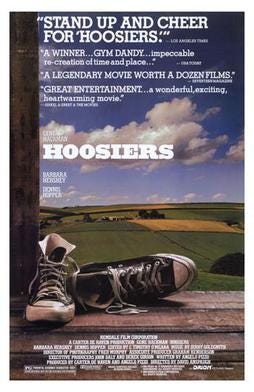
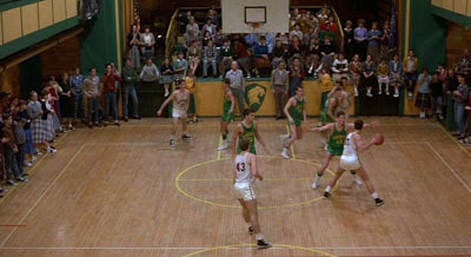

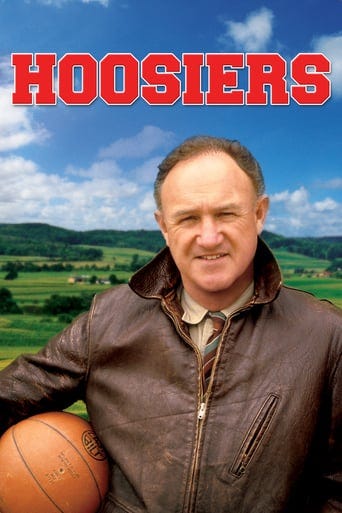
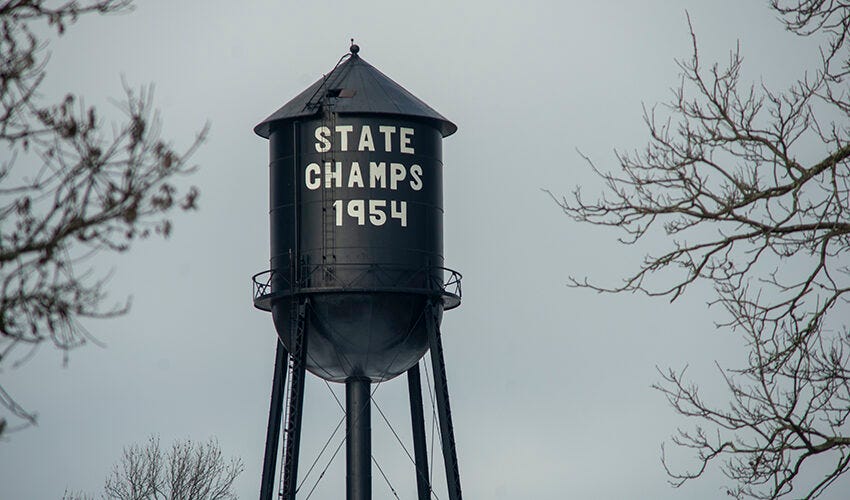
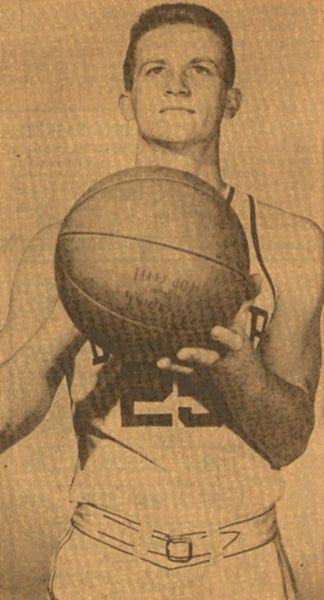


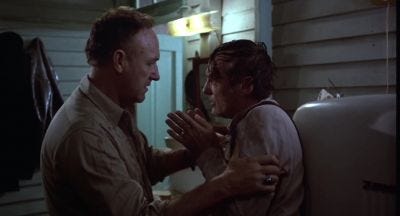
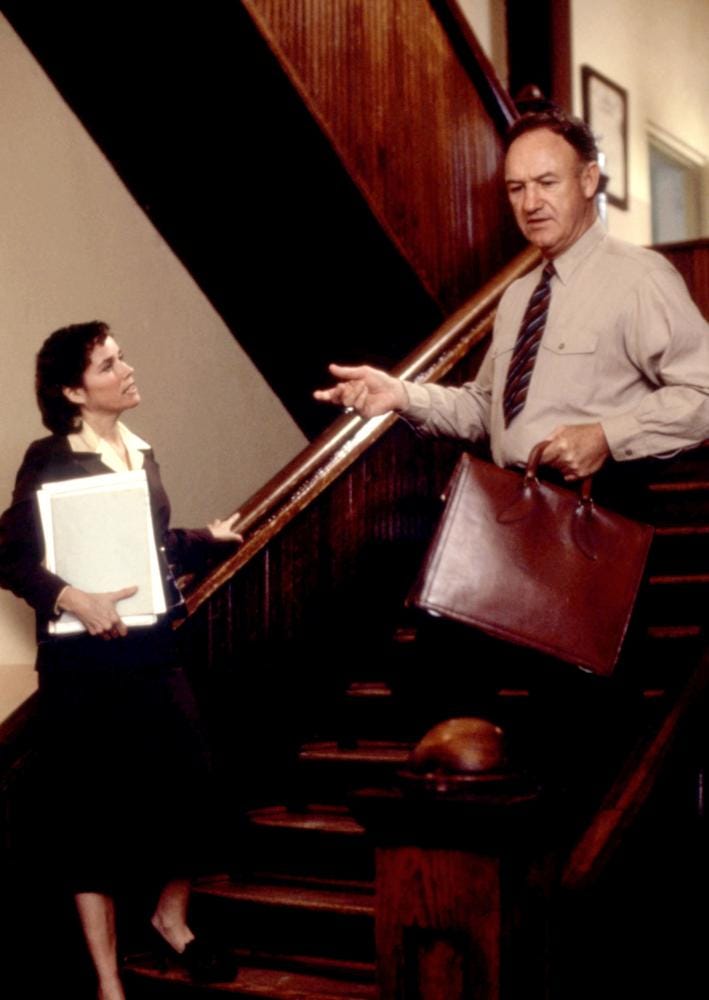
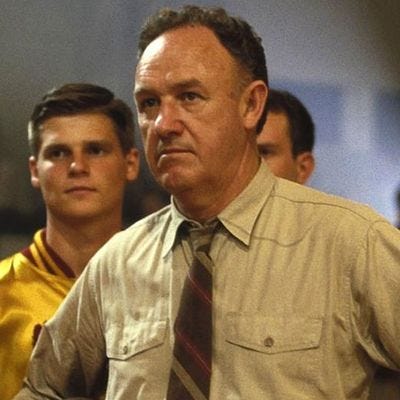
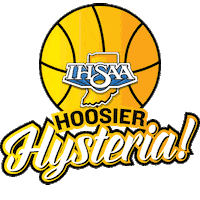
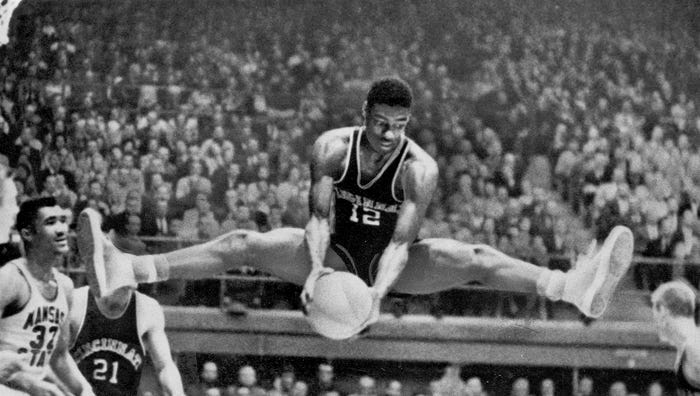
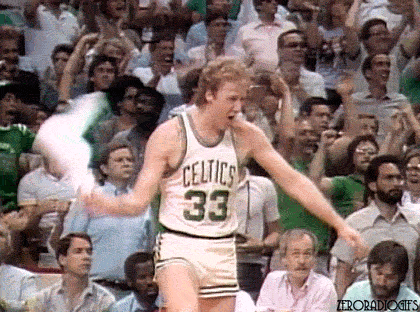




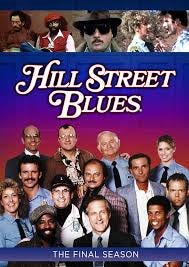


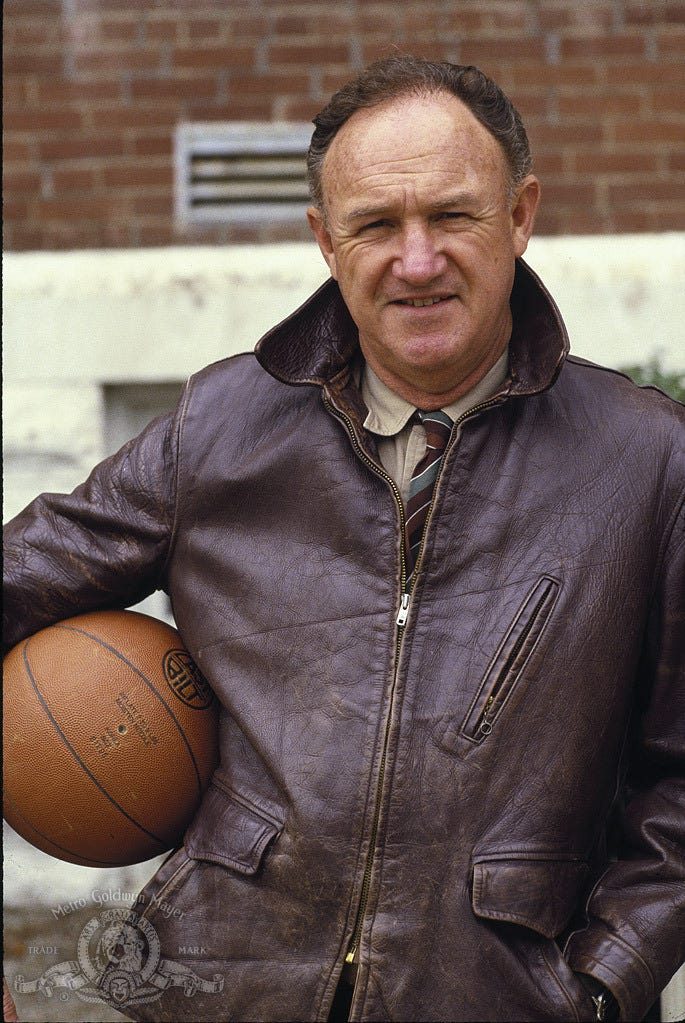
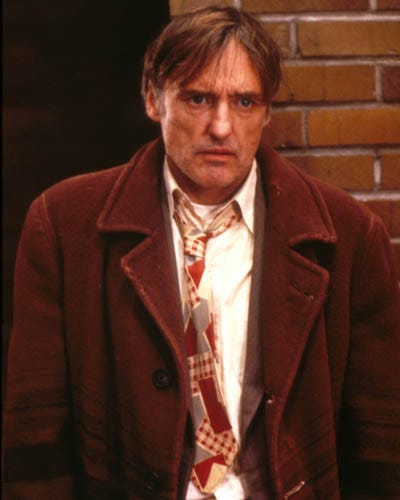
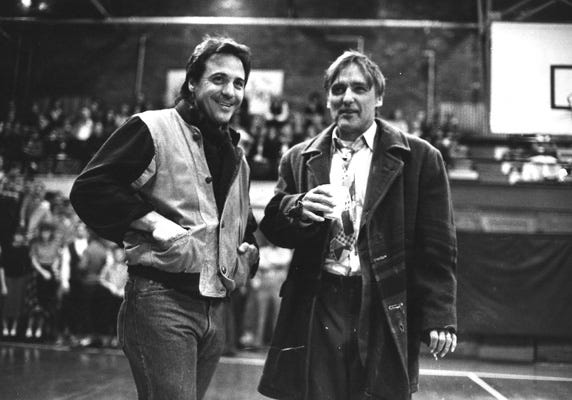
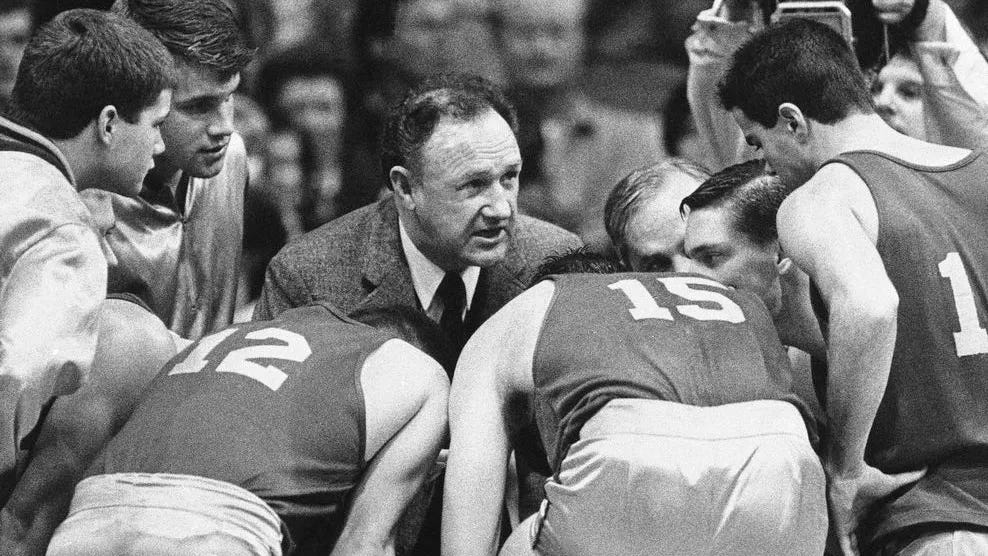

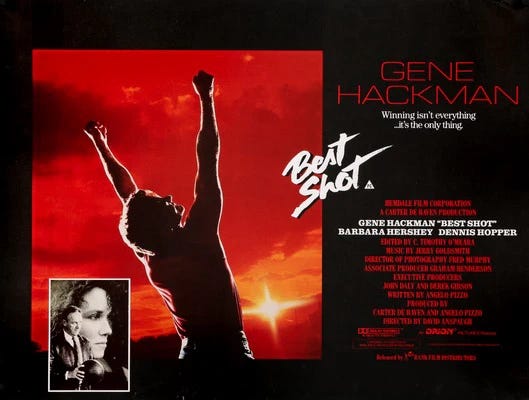
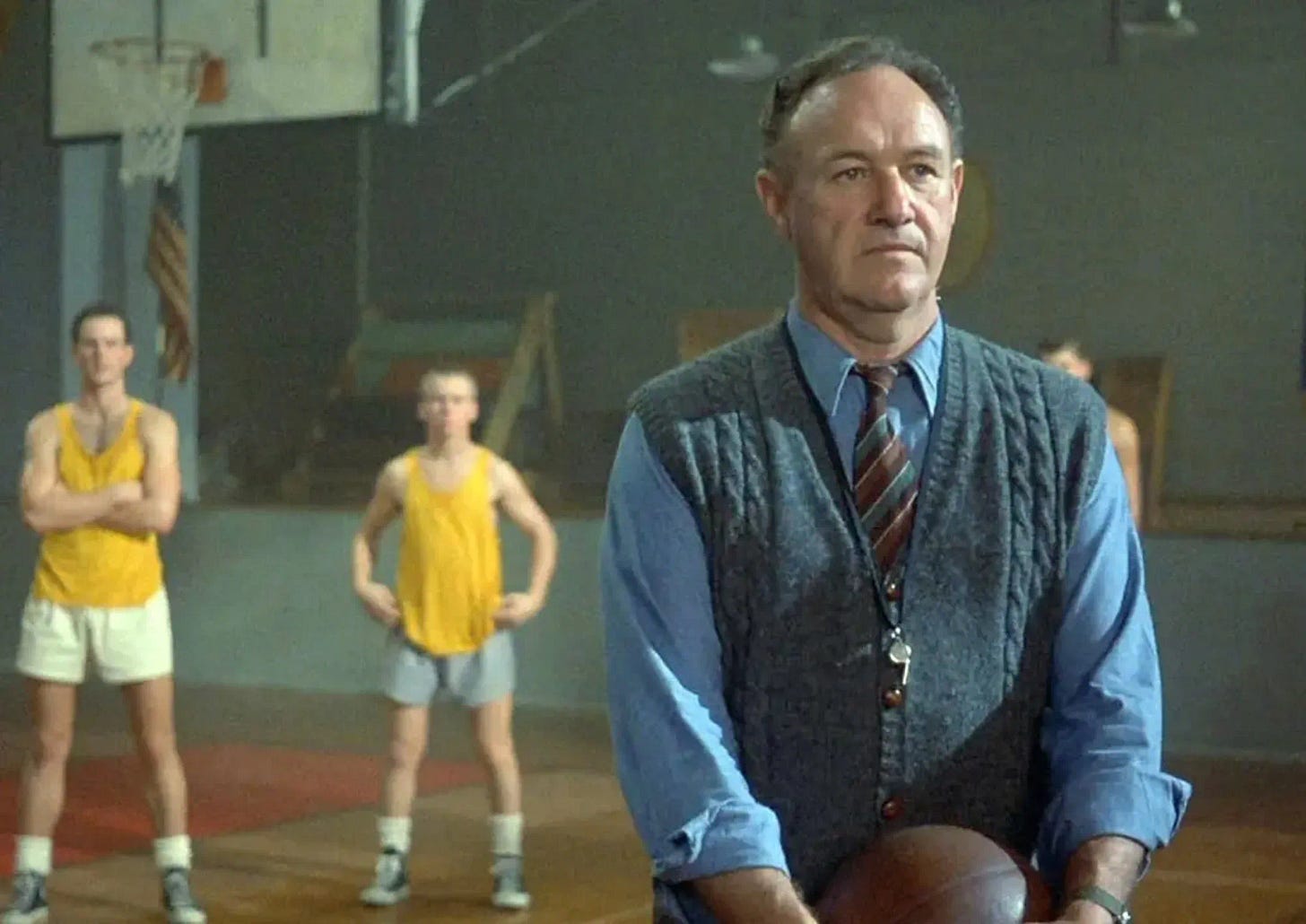

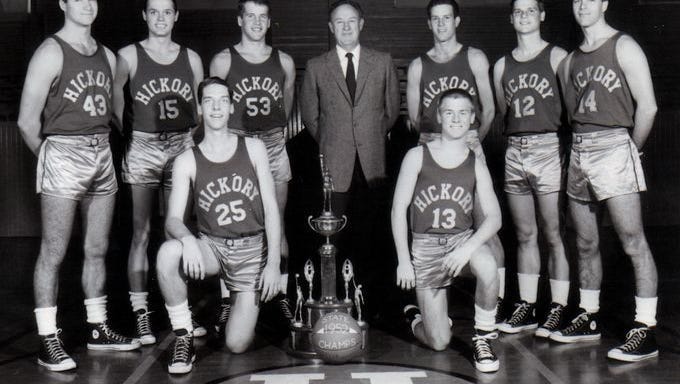
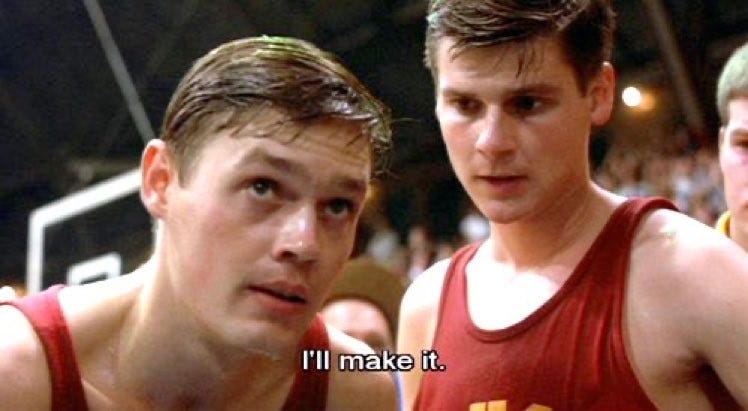
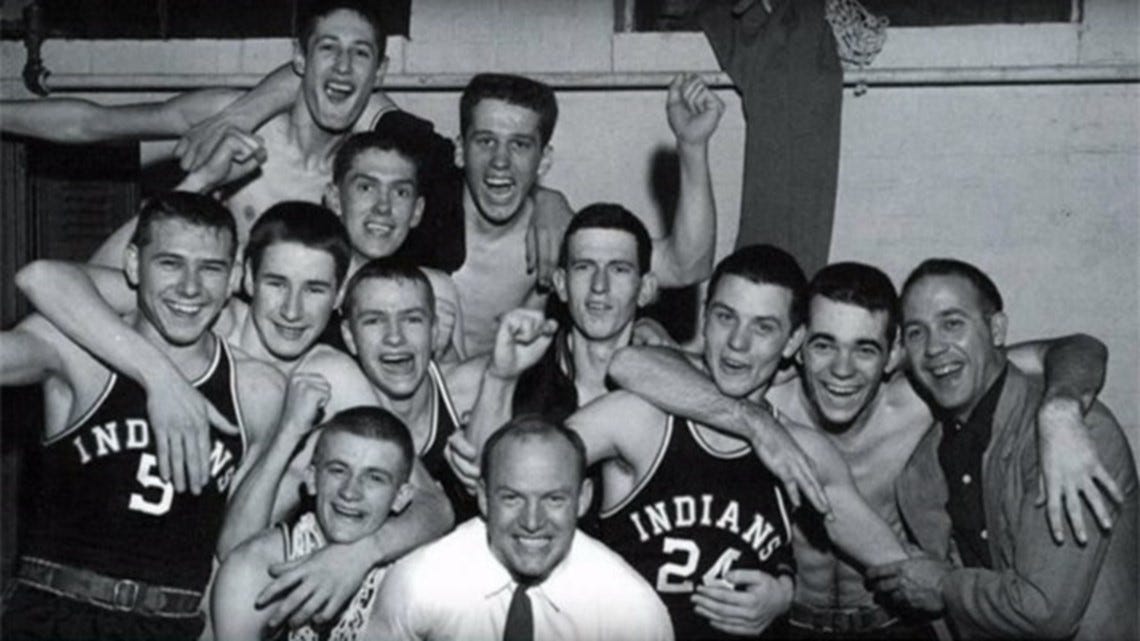
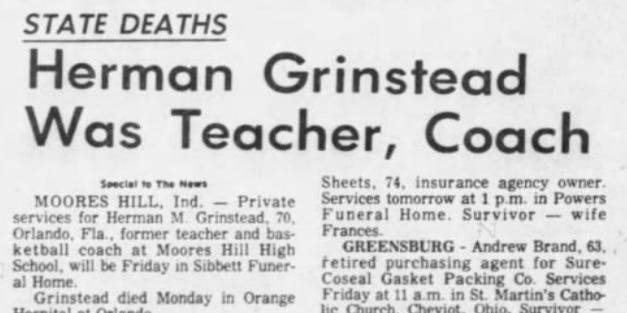
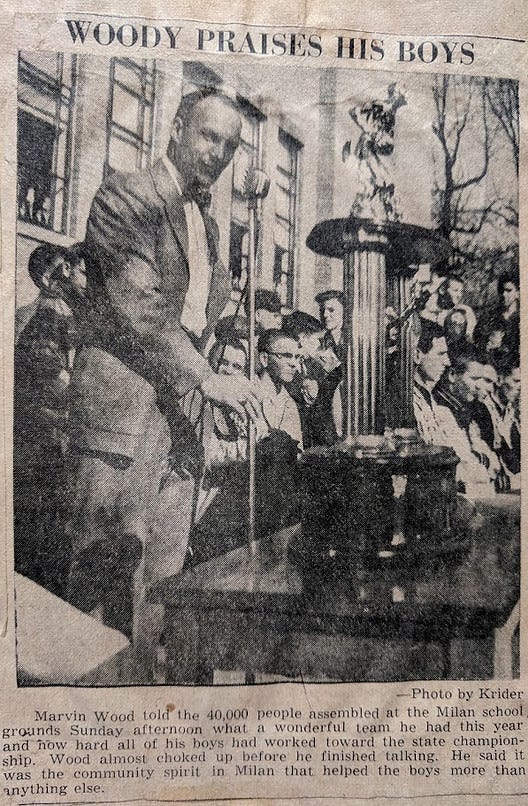
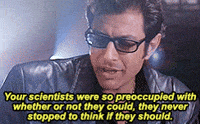


I never watched “Hoosiers” until I was a freshman in college, and only because I said I didn’t know what a Hoosier was. I was also at DePauw University in Indiana (with you, Beth, lol), so you can only imagine the reaction I received 😆
So, ever since then, I have become a passionate fan of all things Indiana. When I had the opportunity to relocate to Indianapolis from Ohio for work, I jumped at the chance. I have cheered for the Colts, Pacers, and most recently Caitlyn Clark of the Olympics and now the WNBA.
While I am once again back in the Buckeye State, I will always look to Indiana as my home away from home.
Thank you for sharing this story, and now I need to find “Hoosiers” to watch this weekend.
One of my all time favorites, Beth! Thanks for the write up.